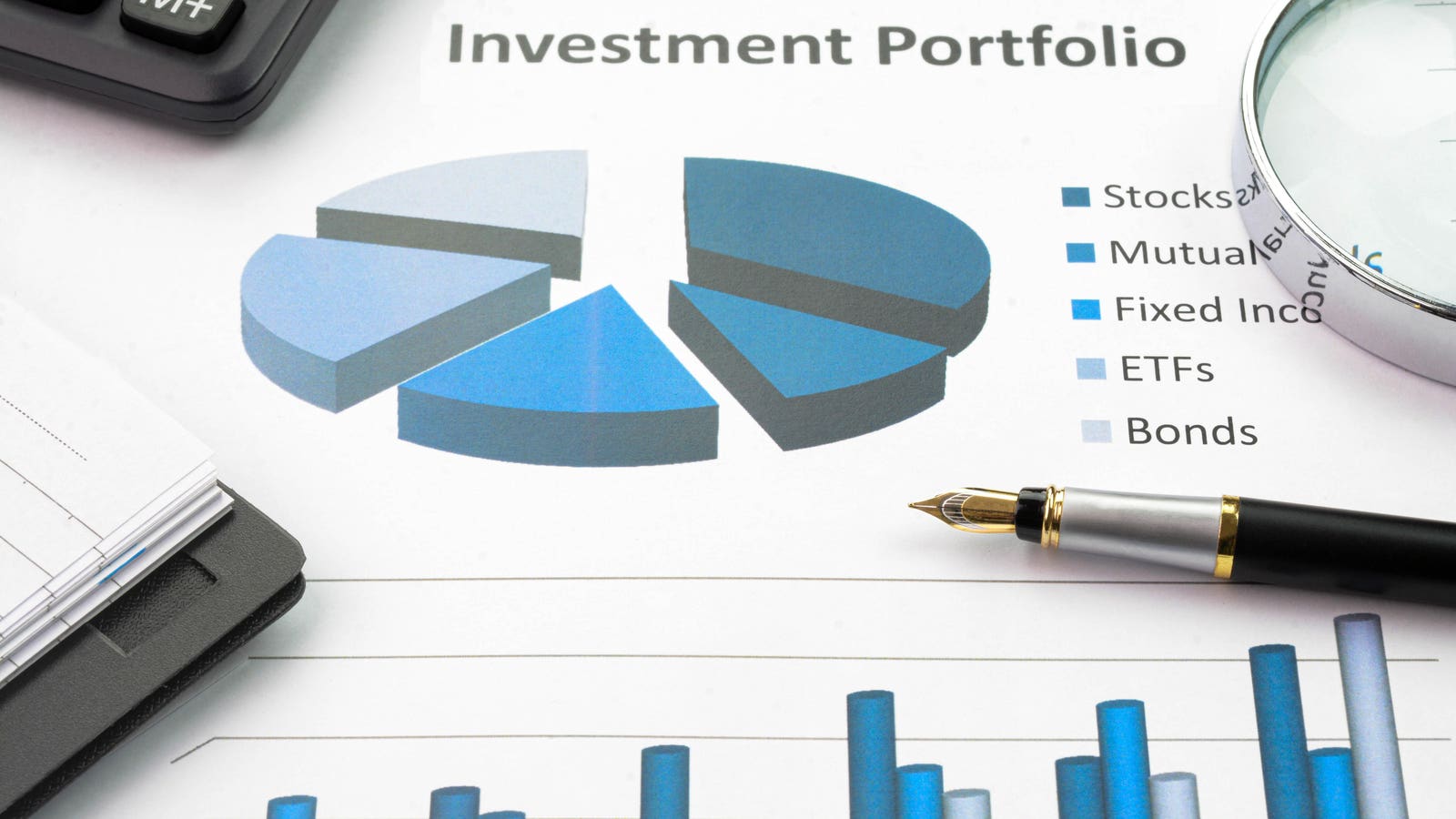When is the best time to start investing for retirement? Right now. As a rule of thumb, you need to amass about 10 times your annual salary by the time you retire. Fall short of that mark and you face a lifestyle downgrade in your senior years.
The most reliable way to reach that target is contributing 15% of your salary to an investment account during most of your working years. Unfortunately, a 15% contribution rate can be a steep challenge if you’re living on a tight budget and/or managing debt.
Still, it’s critical to find a way to prioritize retirement savings soon. The money you invest today can potentially double nearly every 10 years. Wait longer to start and you reduce the number of wealth doubling cycles available to you.
If your budget today doesn’t support retirement investing, make some changes. Downgrade your lifestyle. Pay down your high-rate debt pronto and start funneling small contributions to retirement. Once the debt is gone, raise your contributions—and keep raising them every time your pay increases.
With a 15% contribution rate in your sights, let’s talk about where the money goes.
What Is A Retirement Investment Portfolio?
Your retirement contributions will fund an investment portfolio—that is, a collection of assets you expect to grow in value over time. For most retirement savers, the assets are stocks, bonds and funds. You invest in these securities while you’re earning a paycheck, so you can convert them into income when you retire.
Unless you already have a big pot of money earmarked for funding your senior years, you need a retirement investment portfolio. Cash savings don’t have the earning power to grow to six figures or more during your lifetime. And Social Security won’t replace more than 40% of your working income.
Below I’ll cover the basics of retirement investing, including the types of accounts, investments and portfolio management strategies. I’ll also touch on your investment time horizon and how it influences your asset allocation and risk tolerance.
Key Points
- Tax-advantaged retirement accounts can help you build wealth faster, but they come with withdrawal restrictions.
- You can take an active or passive approach to retirement investing. Active involves frequent trading, while passive seeks to hold a stable set of securities over time.
- Your retirement portfolio should include a strategic mix of stocks and bonds (or stock funds and bond funds) that matches your timeline and risk tolerance.
Investment Account Types For Retirement
An early decision you’ll make in your retirement investing program is where to hold your securities. Your investment account options can vary depending on your employment status and the programs your employer offers.
The table below introduces 18 investment account types you can use for retirement, along with the tax treatment and availability of each.
You can see that these investment accounts have one of three tax treatments: taxable, tax-deferred and tax-free. Below is an explanation of each.
Investing in stocks is one of the best moves you can make to grow your wealth and build your nest egg. The Forbes investment team has identified undervalued stocks poised to surge in this exclusive report, 7 Stocks To Buy Now.
Taxable Accounts
Taxable accounts are generally available to any adult with a Social Security number (SSN). You can set up the account just as you would establish a cash savings account. Simply fill out a few forms and you’re ready to start investing.
In any taxable account, you incur taxes on interest, dividends and realized capital gains. The company that manages your account will send you an annual tax statement that summarizes your taxable transactions for the year.
Tax-Deferred Accounts
Tax-deferred accounts postpone the annual tax liability on interest, dividends and realized gains. These accounts also allow you to contribute pretax funds.
Your investments can grow and compound undisturbed from any tax burden until your senior years. Once you start taking qualified retirement distributions, those withdrawals are taxed as ordinary income.
Tax-deferred accounts are subject to withdrawal restrictions and other requirements. In an Individual Retirement Account (IRA) or 401(k), for example, you’ll normally pay a 10% penalty if you withdraw pretax contributions before age 59 ½.
Tax-Free Accounts
Roth IRAs and Roth funds within a 401(k) or 403(b) account allow tax-free interest, dividends and realized capital gains under certain conditions. The three primary conditions are:
- You contribute after-tax money to the Roth account.
- You wait to take withdrawals until you are 59 ½ years old.
- It’s been five years or more since you first contributed funds to a Roth account.
Under those rules, your investments grow and earn without tax implications. And, qualified withdrawals in retirement are tax-free.
Another option for tax-free investment growth is an HSA. The HSA is oriented towards healthcare expenses, but you can use it for healthcare expenses in retirement.
This is the only account type that accepts pretax contributions and allows for tax-free withdrawals. To take advantage of tax-free earnings and withdrawals, the money you take out of the account must be spent on qualified healthcare expenses.
You can’t withdraw HSA funds for any other purpose before the age of 65 without facing a 20% penalty. After 65, you can withdraw money whenever you want. Funds spent on healthcare are still tax-free. All other withdrawals are subject to ordinary income tax.
Which Retirement Account Type Is Best?
When deciding which tax treatment is best for your retirement investment account, consider these factors:
- Do you plan to retire early? If you need access to your retirement fund, say, in your early-50s, a taxable account is the best option. You’ll pay taxes annually on the earnings—which slows your wealth progress—but you won’t be subject to withdrawal restrictions.
- Do you expect to be in a higher tax bracket in retirement? With traditional tax-deferred accounts, you contribute pretax funds in exchange for paying taxes later. With Roth accounts, you contribute aftertax funds but pay no taxes later. You would opt for paying the taxes now if you expect to be in a higher tax bracket in retirement, and vice versa. If you’re not sure, consider diversifying your future tax situation by contributing to both account types.
- Do you plan to bequeath your retirement investments to a loved one? 401(k)s and traditional IRAs are subject to mandatory taxable withdrawals starting in your 70s. Roth IRAs don’t have that requirement as long as you are the original account owner. So, it’s possible to let your Roth balance grow throughout your lifetime and use it as your legacy. Note that your heirs would be subject to required withdrawals in their inherited Roth accounts.
Types Of Investments For Retirement Portfolios
The most common investment types for retirement portfolios are stocks, bonds and funds. Some retirement accounts also support annuities and real property.
Stocks
Stocks are a core asset in a retirement portfolio because they offer good potential for long-term appreciation. Some additionally deliver income in the form of dividends.
Stocks come in many varieties, and each has its own risk profile. A few of the big stock categories to understand are growth stocks, value stocks and dividend stocks.
Growth Stocks
Growth stocks are ownership shares that investors expect to appreciate faster than peers or faster than the overall market. The following characteristics are associated with growth stocks:
- Minimal or no dividends: Growth companies reinvest profits rather than paying them out to shareholders.
- Track record of market-beating growth
- Large target market with untapped opportunity
- Competitive advantage and loyal customer base
- Aggressive growth expectations
Growth stocks can create wealth quickly, but that potential comes with volatility. Strategic growth initiatives can disappoint if the economy goes south, suppliers fall short, products fail or the company can’t execute its plans. Examples of growth stocks include Tesla, Amazon, Facebook, Apple and Microsoft.
Value Stocks
Value stocks are ownership shares that investors believe are underpriced. The value investing theory is that underpriced stocks have more growth potential because investors will eventually realize their worth and push their stock prices higher.
These characteristics are associated with value stocks:
- Healthy dividend yields
- History of steady revenue, profit and cash flow growth
- Enduring competitive advantage
- Disciplined leadership team
- Strong financial position
Value stocks can take time to reprice higher, but investors usually earn dividend income while they wait. Examples of value stocks include Johnson & Johnson, Coca-cola and Procter & Gamble.
Dividend Stocks
Dividend stocks are ownership shares that investors own primarily for the dividend payments. A premier dividend stock will have a long history of increasing dividends annually. A portfolio of premier dividend stocks can be one of the best retirement income strategies because those positions will produce income as they grow in value.
Typically, you’d want to hold dividend stocks in a tax-deferred or tax-free account to minimize your annual tax liability. You’d also want to reinvest dividends while you’re still working. This allows you to increase your dividend income potential faster.
Once you retire, you can start taking dividends in cash. That helps with your liquidity, as you’ll be less reliant on selling stocks to fund your retirement distributions. [Note: Forbes has a premium investment newsletter, Forbes Dividend Investor, that recommends 25 dividend stocks with strong fundamentals.]
Other Stock Categories
Beyond growth, value and dividend-payers, there are many other ways to categorize stocks, including geography, sustainability, size and sector.
- Geography: U.S. companies tend to be less risky than international companies. But companies in emerging markets, while volatile, can experience high growth rates.
- Sustainability: ESG stocks are companies that have a strong track record on sustainability initiatives. Some studies have shown that ESG stocks can outperform their non-ESG peers. ESG stands for environmental, social and governance, which are three categories used to manage and report on corporate sustainability initiatives.
- Size/Market capitalization: Small-cap stocks have market capitalization of $300 million to $2 billion. The market values mid-cap stocks from $2 billion to $10 billion. Large-caps are worth $10 billion or more. Larger companies tend to grow slower and have less volatility than smaller companies.
- Sector: The 11 economic sectors include healthcare, financials, information technology and consumer staples. Each has its own behavioral characteristics. Consumer staples, for example, tend to be stable but don’t grow quickly. Information technology companies, on the other hand, can grow fast and are reactive to economic trends.
Investing in stocks is one of the best moves you can make to grow your wealth and build your nest egg. The Forbes investment team has identified undervalued stocks poised to surge in this exclusive report, 7 Stocks To Buy Now.
Bonds
Bonds are debt instruments that pay interest income. They can be issued by governments, municipalities and corporations.
U.S. government bonds, called Treasurys, are the safest, followed by municipal bonds and corporate bonds.
Bonds are also categorized by maturity. Short-term bonds are appealing because they reprice quickly to match market rates. Longer-term bonds provide stable interest payments over time.
The most popular way to invest in bonds in a retirement account is to buy bond funds. These do fluctuate in price based on market trends, but they don’t appreciate the way stocks do. Retirement savers typically build a bond portfolio for income and stability.
Mutual Funds And Exchange-Traded Funds (ETFs)
Funds are pooled investment vehicles that hold multiple assets in a portfolio. When you buy one share of a mutual fund, you get exposure to every security the fund holds. This is a budget-friendly way to diversify.
Mutual funds and ETFs differ in trade timing and settlement. Mutual funds settle all trades once daily. ETFs trade throughout the day on an exchange, just like a stock.
Also, ETFs are usually index funds with low expense ratios. An index fund mimics a benchmark like the S&P 500. You can combine index ETFs to build an index fund portfolio that’s cost-efficient and low maintenance.
Mutual funds or ETFs can be focused on one type of asset, such as growth stocks or short-term government bonds. They can also hold a mix of assets that fulfills a specific investing objective. An example would be a conservative fund that seeks to provide income and low capital appreciation. This type of fund would likely hold mostly bonds and a smaller stock position.
If you have a 401(k), 403(b), 457 or TSP, mutual funds are likely your only investment option. Those plans usually offer a set menu of funds that you can mix and match to build out a mutual fund portfolio.
Annuities
An annuity is a contract you buy with an insurance company that guarantees you future income. You can pay for an annuity in a lump sum or in a series of payments. The terms of the contract outline how your paid-in cash grows over time and what your future income payments will be.
Real Property
You can hold real property in a qualified retirement plan. The conditions are strict, though. For that reason, many retirement savers opt for owning real estate funds instead.
Types Of Portfolio Management
Researching and managing the stocks, bonds, funds and other assets in your retirement portfolio can be overwhelming. Fortunately, there are investing styles that work for everyone, whether you prefer to be hands-on or hands-off with your investments.
Active Vs. Passive Investing
An active investor buys and sells securities often. This is a research-intensive approach that looks for short-term profits by way of well-timed trades. An example is buying 100 shares of Tesla (TSLA) with the intention of selling them the moment they rise 20%.
Passive investors buy securities they can hold indefinitely. This investing style works best with large, established stocks and well-diversified funds. The goal is to build wealth via long-term compounding.
Discretionary Vs. Non-Discretionary Investing
If you’d rather work alongside a broker, you can opt for a discretionary or non-discretionary arrangement.
In a discretionary account, your broker manages the securities and trades at will without your approval. In a non-discretionary account, your broker researches and makes recommendations, but needs your approval for each trade.
Time Horizon And Portfolio Allocation
Whether you’re working with a broker or going solo, it’s useful to understand how your investing time horizon relates to your portfolio allocation. First, let’s define these terms:
- Time horizon: How long you can invest before you need to access the funds. If you are 25 and plan to retire at 65, for example, your time horizon is 40 years. This duration is also called your investment timeline or holding period.
- Portfolio allocation: The mix of your holdings by asset class and type. Allocation is a major determinant of risk. A portfolio that’s 90% stocks and 10% bonds is far riskier than a mix of 40% stocks and 60% bonds.
As a rule, the longer your investing time horizon, the more risk you can tolerate. This is because the stock market is more likely to rise over longer time spans than shorter ones.
Case in point: The overall market has never lost value over 20 years or more. But there have been times when the market lost value over 10 years. And as you look at shorter timeframes, the historical occurrence of loss rises.
The takeaway? Staying invested longer improves your chances of generating profits. This concept is an important one for retirement savers. In the early years of your investing program, you can afford an aggressive, stock-heavy portfolio allocation. As you near retirement, it’s smart to shift to a more conservative mix of assets—to protect the wealth you’ve built.
Risk Tolerance In Investing
Risk tolerance is your ability to accept volatility in the value of your retirement investments. Generally, securities with the most growth potential also have the most volatility. Regardless of your investing time horizon, you shouldn’t take on more risk than you can handle.
The simple truth is that too much risk erodes your ability to make good decisions. If you’re stressed about the performance of your portfolio, you might want to stem losses by liquidating everything. Or you might go the other way, trying to win back value on speculative trades. Neither approach serves you well. That’s why it’s best to keep your portfolio risk within your comfort zone.
The trouble is, it’s hard to know your own risk tolerance until you’ve faced a down market. The best you can do is imagine some scenarios and analyze how you feel about them. Say you’ve built up $500,000 in your retirement account and the balance shrinks to $300,000 overnight. How do you respond?
- You feel sick inside because you just lost $200,000.
- You start counting out how many more years you must work to make up for the losses.
- You tell yourself it’s only temporary and the market will swing back up.
- You get excited because stocks just got cheaper, and your regular contributions will buy more.
If the first answer above is the most relatable, you are risk averse. Keep your approach on the conservative side. If you warm to the fourth answer above, you are risk tolerant. If your timeline supports it, you can invest more aggressively.
Bottom Line
To build an investment portfolio for retirement, choose your tax strategy and account, quantify your time horizon and evaluate your tolerance for risk. Then design an appropriate asset allocation, using stock exposure for growth and bond exposure for stability.
Follow those steps whether you plan to trade often or keep your portfolio stable. That groundwork should give you an investing program that’ll carry you into a comfortable retirement.
Read Next
Investing in stocks is one of the best moves you can make to grow your wealth and build your nest egg. The Forbes investment team has identified undervalued stocks poised to surge in this exclusive report, 7 Stocks To Buy Now.
Read the full article here







